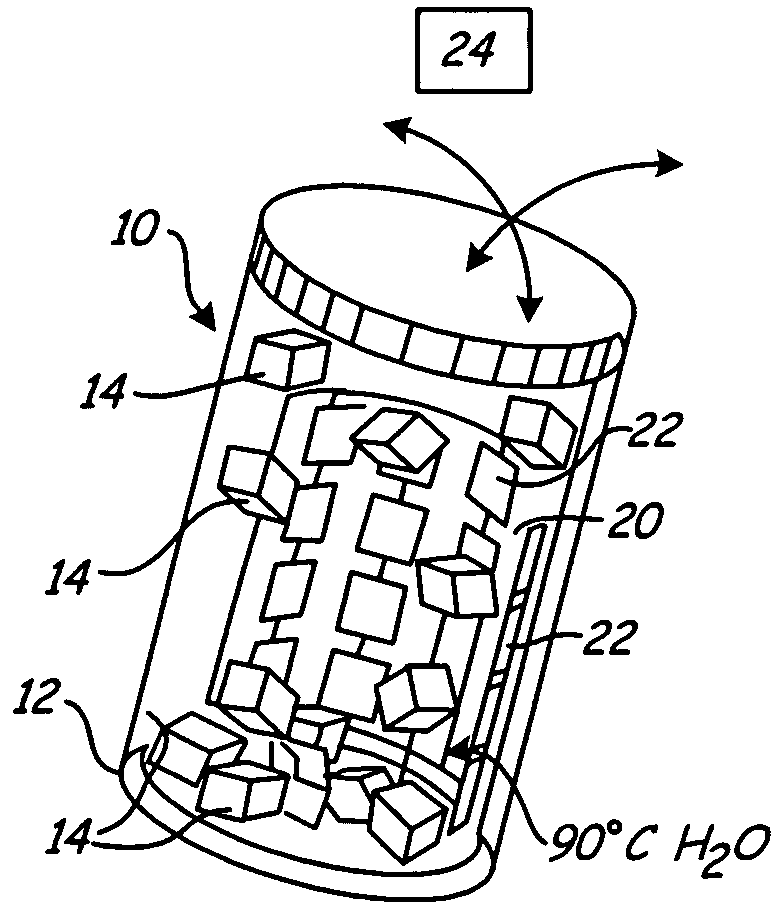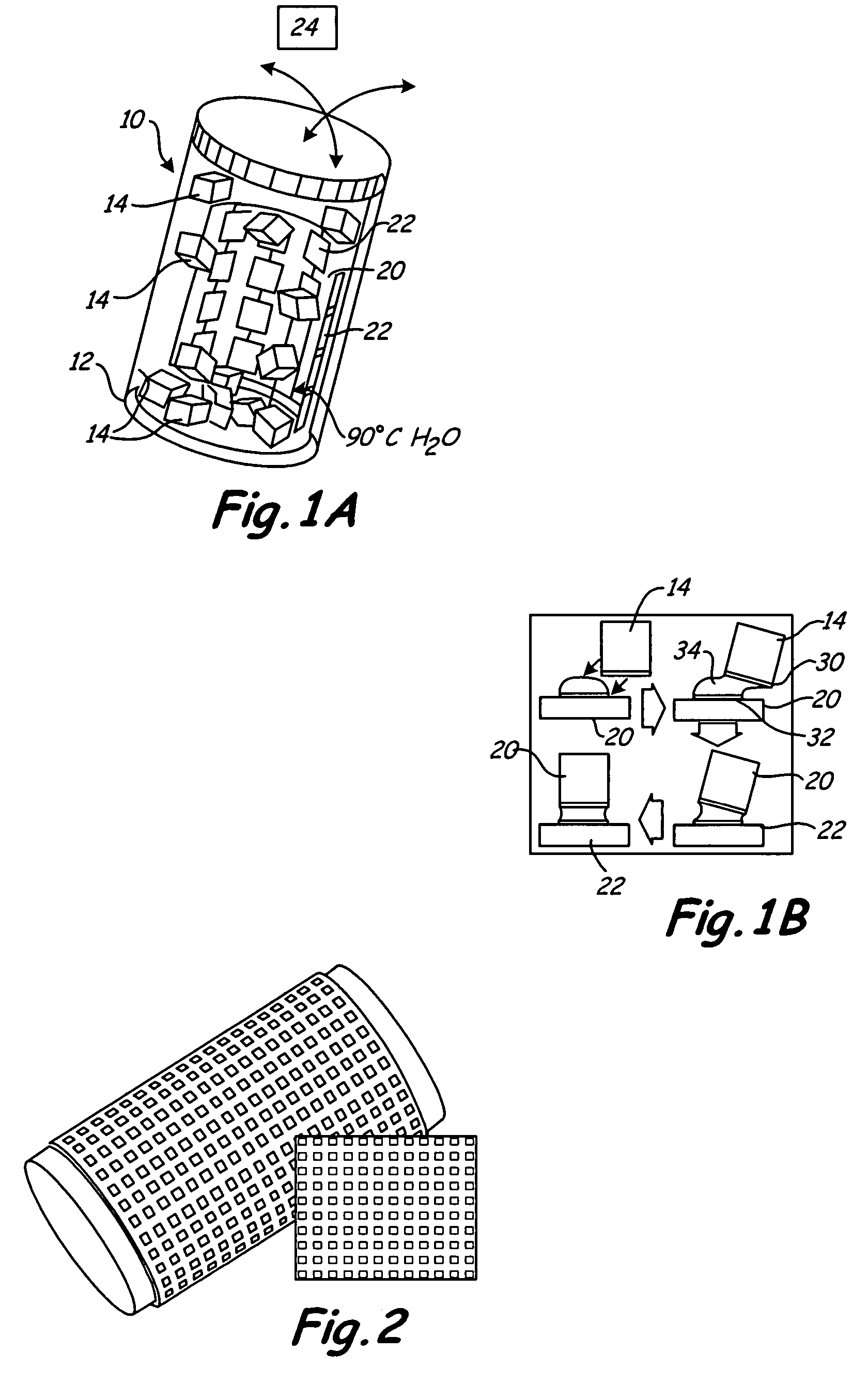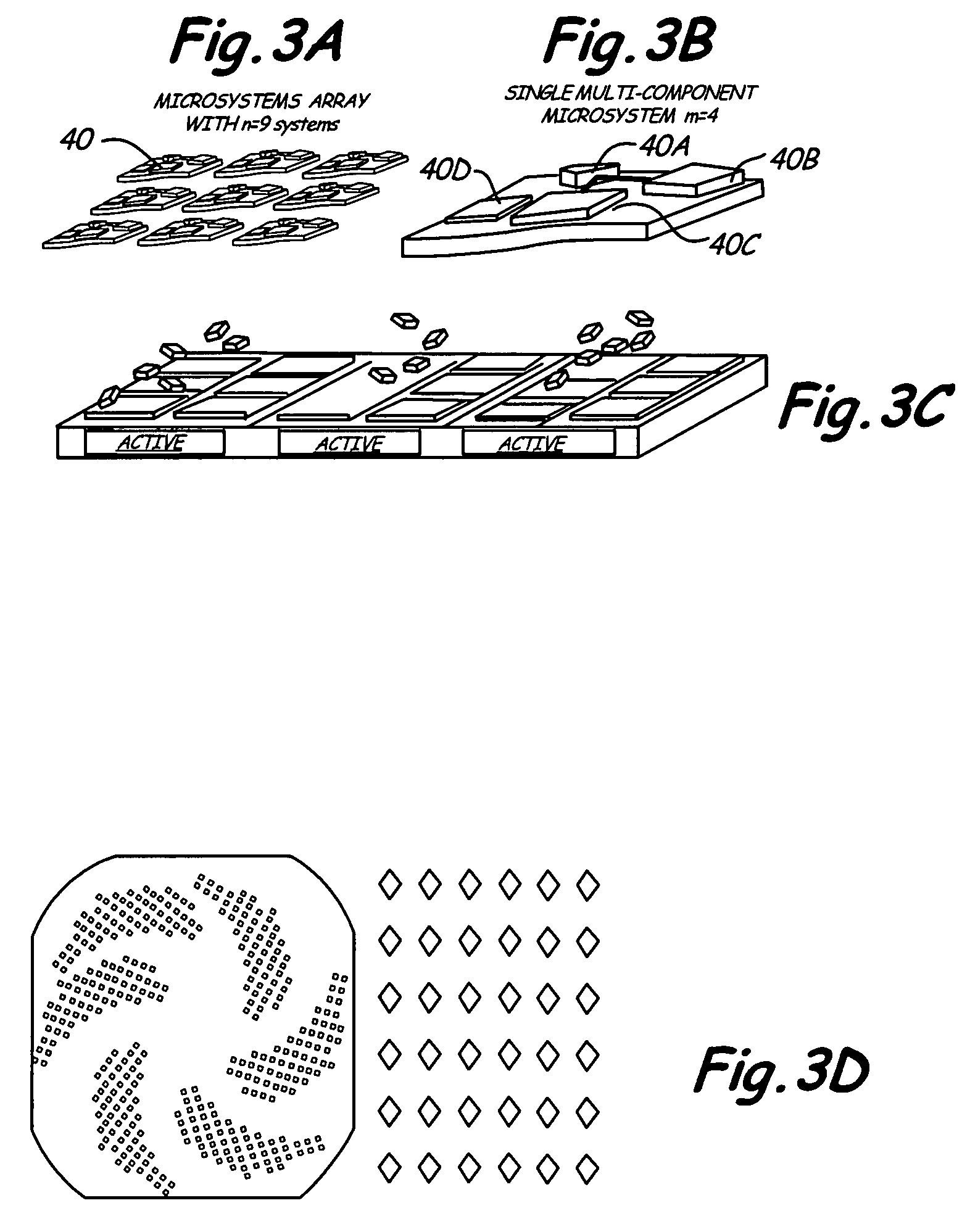Method of self-assembly on a surface
a self-assembly and surface technology, applied in the direction of printed circuit aspects, sustainable manufacturing/processing, final product manufacturing, etc., can solve the problems of difficult to adapt self-assembly to microelectronic systems, which consists of more than one repeating unit, and the integration of components with distinct angular orientation is not possible, so as to achieve the effect of fast delivery of components
- Summary
- Abstract
- Description
- Claims
- Application Information
AI Technical Summary
Benefits of technology
Problems solved by technology
Method used
Image
Examples
Embodiment Construction
[0027]One aspect of the present invention relates to programmable reconfigurable liquid solder directed self-assembly (PRS) process to enable heterogeneous integration of components (e.g., dies, chips, chiplets) on non-planar substrates. The process makes use of solder-based receptors that can be activated locally. Metal contacts on segmented semiconductor devices bind to liquid-solder-based-receptors on a substrate surface during the fluidic self-assembly. Programmability is implemented using solder-based receptors that can be switched “ON” and “OFF” using integrated heaters or scanning lasers. The feasibility of the PRS concept has been evaluated through computer simulations using ANSYS to estimate: (i) the necessary power to heat selected receptors to above the melting point of the solder, (ii) the minimal spacing between receptors for preventing thermal crosstalk, and (iii) the effect of the liquid flow in the agitated assembly solution. We fabricated a prototype substrate to ex...
PUM
| Property | Measurement | Unit |
|---|---|---|
| size | aaaaa | aaaaa |
| melting point | aaaaa | aaaaa |
| temperature | aaaaa | aaaaa |
Abstract
Description
Claims
Application Information
 Login to View More
Login to View More - R&D
- Intellectual Property
- Life Sciences
- Materials
- Tech Scout
- Unparalleled Data Quality
- Higher Quality Content
- 60% Fewer Hallucinations
Browse by: Latest US Patents, China's latest patents, Technical Efficacy Thesaurus, Application Domain, Technology Topic, Popular Technical Reports.
© 2025 PatSnap. All rights reserved.Legal|Privacy policy|Modern Slavery Act Transparency Statement|Sitemap|About US| Contact US: help@patsnap.com



